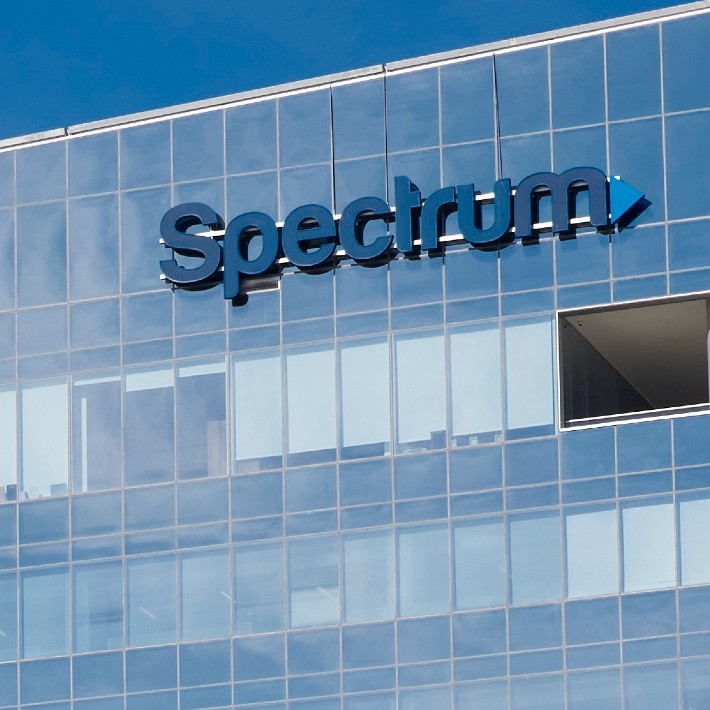Gigabit competition among drivers impacting broadband sub growth at Charter
But the impact on broadband sub growth from 1-Gig competition pales when compared to other factors, including record low churn driven by reduced move activity and a sluggish market for new housing, Charter CFO Jessica Fischer says.

The presence of 1-Gig competition is impacting the pace of broadband subscriber growth and generating lower churn rates in certain markets for Charter Communications. But other factors, such as low consumer move rates and a slowdown in new household formation, are having a greater impact on the cable operator's ability to take broadband market share.
That's according to Charter CFO Jessica Fischer, who spoke Wednesday at the J.P. Morgan Global Technology, Media and Communications Conference.
Figure 1:  Charter's headquarters in Stamford, Connecticut.
Charter's headquarters in Stamford, Connecticut.
(Source: Charter Communications)
Gross broadband adds and churn rates are both down in markets where another gigabit product is available when compared to markets where one is not, she said. Those factors, plus the aforementioned low-move environment and sluggish times for new housing, have combined to reduce the opportunities to win new broadband customers. Charter added 185,000 residential and commercial broadband subs in Q1 2022, down from the 355,000 added in the year-ago period.
"We tend to be a share-taker," Fischer said. "Movement in our markets is what generates net adds for us." While there are recent signs of an uptick in consumer movement, the overall level of movement remains at extraordinarily low levels, she added.
Fischer estimates that about 38% of Charter's footprint is overlapped by gigabit services. Although telcos and competitive overbuilders and startups have been ramping up fiber-to-the-premises (FTTP) network deployments overall, the overlap in Charter territory "has not changed significantly over the last eight, ten quarters," she noted.
Facing off with fiber
Charter feels its hybrid fiber/coax (HFC) platform is in good position to compete against FTTP using "high-split" upgrades on DOCSIS 3.1 networks that will enhance upstream capacity and enable the operator to deliver symmetrical gigabit services. Symmetrical multi-gigabit capabilities over HFC are on the horizon with DOCSIS 4.0.
"The advantage that we have is that we can do that ... with a whole lot less capital than the people who are building today with fiber," Fischer said.
Charter hasn't revealed its expected capital outlay for high-splits or D4.0. But a recent analysis indicates that high-splits could run $100 per household passed, and $250 to $400 per home passed for a fuller DOCSIS 4.0 network transition. That's still far below the general estimated cost of $1,000 per home passed for building FTTP.
Whether consumers actually need symmetrical gigabit speeds (or more) is another question. For now, offering such billboard speeds is good fodder for broadband marketing teams.
"I'm not sure there are particular good use cases today" for symmetrical gigabit broadband, Fischer said. "But in the long run, I think the past has shown that we'll see those use cases develop. So we need to be there with a product that will deliver to be able to serve that future use case."
Charter still isn't seeing much of a competitive impact from fixed wireless access (FWA) providers. However, Fischer allowed that FWA competition might be "shaving off the top of that total gross adds number" among consumers who are simply willing to switch and give FWA a try.
At the same time, Fischer said Charter views FWA a bit like it does DSL and VDSL – an opportunity to nab broadband share. "It's a set of customers who ultimately will be our customers in the long run, and we'll have to go in and compete and win them back," she explained.
Meanwhile, Charter, like other cable operators, is looking to stoke broadband subscriber growth through network expansions. In Charter's case, that's meant participating in government subsidy programs, such as the Rural Digital Opportunity Fund (RDOF) and the new infrastructure bill, as well as network edge-outs to areas adjacent to its existing footprint.
"I think you'll see us continue to bid on those subsidized funds that become available to go out and complete the project of connecting rural America," Fischer said.
Charter would consider growth through M&A, but there hasn't been many opportunities to buy cable operations at a reasonable price. That's led Charter to get more fully behind the build option.
Related posts:
— Jeff Baumgartner, Senior Editor, Light Reading
About the Author(s)
You May Also Like












